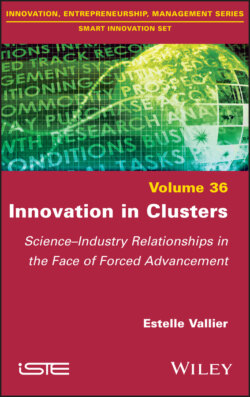Читать книгу Innovation in Clusters - Estelle Vallier - Страница 26
1.2.2. A spontaneous and innovative environment conducive to a “technological atmosphere”?
ОглавлениеIn the mid-1980s, regional and industrial economies differentiated between, on the one hand, “the regions that are winning”, to use the title of Benko and Lipietz’s book literally (Benko and Lipietz 1992), and on the other hand, those that are losing. The concentration, or otherwise, of research and development activities thus appears to be decisive. The European Research Group on Innovative Environments (Groupe de Recherche Européen sur les Milieux Innovateurs, GREMI) is investigating some 15 regions in Europe in a comparative approach in order to answer the question of why are some regions developing while territories with large manufacturers are in progressive decline. In this perspective, the analysis grid becomes the notion of environment. Linked to the life sciences, its definition is understood as “a set of external factors that act in a permanent or lasting way on living beings” (Coppin 2002, p. 32). Cangilhem emphasizes the predominance of the deterministic dimension in the notion of environment developed in biology (Cangilhem 2000). This systemic character is largely revisited in the concept of the innovative environment, insofar as the authors consider that innovation is no longer the product of single enterprises, but of the social, economic and political factors necessary for the innovation process. GREMI’s authors combine an industrial analysis with a spatial analysis of innovation and base this on three axes (Camagni and Maillat 2006): the technological paradigm (the capacity of the enterprise to develop a technology with a view to differentiating itself from its environment), the organizational paradigm (the capacity of the enterprise to establish relationships with the other actors in its environment) and the territorial paradigm (the capacity of the enterprise to identify and take advantage of the attributes of its territory: know-how, competencies, as well as institutions, etc.).
One of the best known examples is the study of the Jura Arc (Maillat et al. 1992), which analyzes the transition from an industrial district centered on the watchmaking industry to a technological district focused on microtechnology. In this transformation, the role of the environment is highlighted insofar as innovation has taken place on the basis of the existing fabric: a shift from mechanical to electronic skills, the gradual integration of electronic products from watchmaking into printed circuit components, etc. (Pfister and Nemeti 1995, p. 29). In this regard, Benko tells us that innovative enterprises do not pre-exist in local environments, but are secreted by them (Benko 2007). Gradually, local training courses are adjusting the content of their teaching to this reconversion, such as the Lausanne Polytechnic, the Swiss Laboratory for Watchmaking Research and the Swiss Center for Electronics and Microtechnology. This adjustment is also favored by the environment, that is, the local industrial culture and the mobility of people on the labor market.
While Marshall spoke of an industrial atmosphere in his works on the district, theories on the environment tend to show that a technological atmosphere conducive to innovation can exist in some fashion within a territory. Among these works on the concentration of technological activities, divergences appear on the relevant spatial scale of such systems: from very localized business parks (Bernardy and Boisgontier 1988) to regional innovation systems (Cooke 2001) and urban innovation systems (Grossetti 2001).
Ultimately, all of these configurations can be understood according to the concept of “local innovation systems” (Gilly and Grossetti 1993), namely:
A set of organizations (companies, research centers, universities, etc.) and individuals producing technological innovation on the basis of regular research and development activities within a given area (Grossetti 1995, p. 4).
The 1980s were therefore conducive to the research into the phenomenon of concentration of technological activities by social scientists, who linked it to the transition from industrial to cognitive capitalism.
